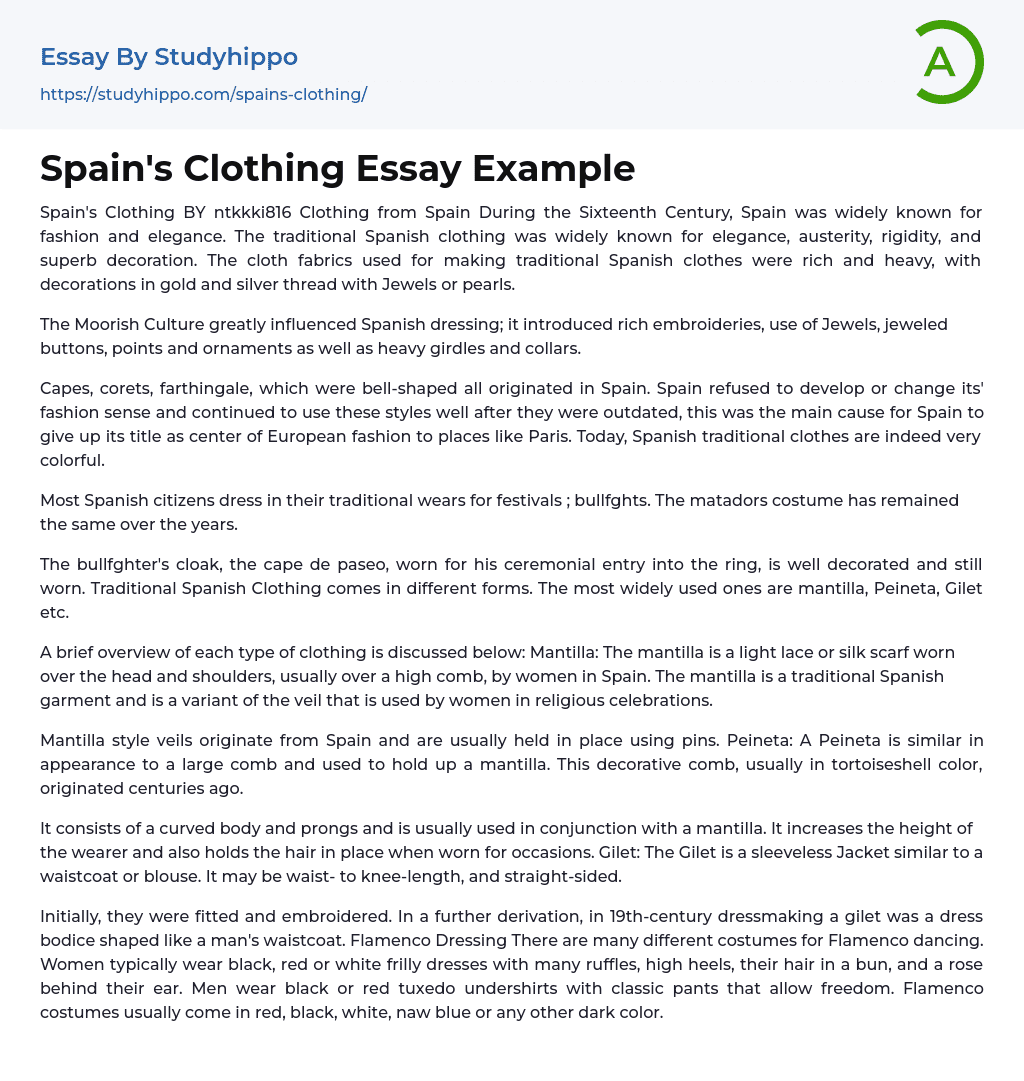Spain was widely known for fashion and elegance. The traditional Spanish clothing was widely known for elegance, austerity, rigidity, and superb decoration. The cloth fabrics used for making traditional Spanish clothes were rich and heavy, with decorations in gold and silver thread with Jewels or pearls.
The Moorish Culture greatly influenced Spanish dressing; it introduced rich embroideries, use of Jewels, jeweled buttons, points and ornaments as well as heavy girdles and collars.
Capes, corets, farthingale, which were bell-shaped all originated in Spain. Spain refused to develop or change its' fashion sense and continued to use these styles well after they were outdated, this was the main cause for Spain to give up its title as center of European fashion to places like Paris. Today, Spanish traditional clothes are indeed very colorful.
>
Most Spanish citizens dress in their traditional wears for festivals ; bullfghts. The matadors costume has remained the same over the years.
The bullfghter's cloak, the cape de paseo, worn for his ceremonial entry into the ring, is well decorated and still worn. Traditional Spanish Clothing comes in different forms. The most widely used ones are mantilla, Peineta, Gilet etc.
A brief overview of each type of clothing is discussed below: Mantilla: The mantilla is a light lace or silk scarf worn over the head and shoulders, usually over a high comb, by women in Spain. The mantilla is a traditional Spanish garment and is a variant of the veil that is used by women in religious celebrations.
Mantilla style veils originate from Spain and are usually held in place using pins. Peineta: A Peineta is similar in appearance to a large comb and used t
hold up a mantilla. This decorative comb, usually in tortoiseshell color, originated centuries ago.
It consists of a curved body and prongs and is usually used in conjunction with a mantilla. It increases the height of the wearer and also holds the hair in place when worn for occasions. Gilet: The Gilet is a sleeveless Jacket similar to a waistcoat or blouse. It may be waist- to knee-length, and straight-sided.
Initially, they were fitted and embroidered. In a further derivation, in 19th-century dressmaking a gilet was a dress bodice shaped like a man's waistcoat. Flamenco Dressing There are many different costumes for Flamenco dancing. Women typically wear black, red or white frilly dresses with many ruffles, high heels, their hair in a bun, and a rose behind their ear. Men wear black or red tuxedo undershirts with classic pants that allow freedom. Flamenco costumes usually come in red, black, white, naw blue or any other dark color.




